Brain-enriched RagB isoforms regulate the dynamics of mTORC1 activity through GATOR1 inhibition
- PMID: 36097071
- PMCID: PMC9481464
- DOI: 10.1038/s41556-022-00977-x
Brain-enriched RagB isoforms regulate the dynamics of mTORC1 activity through GATOR1 inhibition
Abstract
Mechanistic target of rapamycin complex 1 (mTORC1) senses nutrient availability to appropriately regulate cellular anabolism and catabolism. During nutrient restriction, different organs in an animal do not respond equally, with vital organs being relatively spared. This raises the possibility that mTORC1 is differentially regulated in different cell types, yet little is known about this mechanistically. The Rag GTPases, RagA or RagB bound to RagC or RagD, tether mTORC1 in a nutrient-dependent manner to lysosomes where mTORC1 becomes activated. Although the RagA and B paralogues were assumed to be functionally equivalent, we find here that the RagB isoforms, which are highly expressed in neurons, impart mTORC1 with resistance to nutrient starvation by inhibiting the RagA/B GTPase-activating protein GATOR1. We further show that high expression of RagB isoforms is observed in some tumours, revealing an alternative strategy by which cancer cells can retain elevated mTORC1 upon low nutrient availability.
© 2022. The Author(s).
Conflict of interest statement
The authors declare no competing interests.
Figures
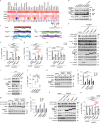
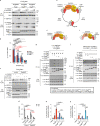
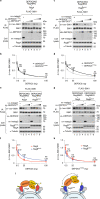

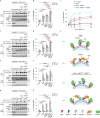
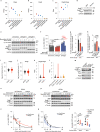
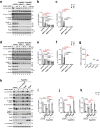


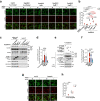
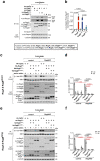
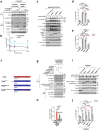

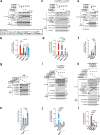
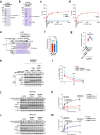
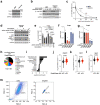
Comment in
-
Keeping up with the Rag GTPases.Nat Cell Biol. 2022 Sep;24(9):1330-1331. doi: 10.1038/s41556-022-00981-1. Nat Cell Biol. 2022. PMID: 36097073 No abstract available.
Similar articles
-
RagA, an mTORC1 activator, interacts with a hedgehog signaling protein, WDR35/IFT121.Genes Cells. 2019 Feb;24(2):151-161. doi: 10.1111/gtc.12663. Epub 2019 Jan 15. Genes Cells. 2019. PMID: 30570184
-
Regulation of mTORC1 by the Rag GTPases.Biochem Soc Trans. 2023 Apr 26;51(2):655-664. doi: 10.1042/BST20210038. Biochem Soc Trans. 2023. PMID: 36929165 Free PMC article. Review.
-
Coordination of the leucine-sensing Rag GTPase cycle by leucyl-tRNA synthetase in the mTORC1 signaling pathway.Proc Natl Acad Sci U S A. 2018 Jun 5;115(23):E5279-E5288. doi: 10.1073/pnas.1801287115. Epub 2018 May 21. Proc Natl Acad Sci U S A. 2018. PMID: 29784813 Free PMC article.
-
The Sestrins interact with GATOR2 to negatively regulate the amino-acid-sensing pathway upstream of mTORC1.Cell Rep. 2014 Oct 9;9(1):1-8. doi: 10.1016/j.celrep.2014.09.014. Epub 2014 Sep 25. Cell Rep. 2014. PMID: 25263562 Free PMC article.
-
Rag GTPase in amino acid signaling.Amino Acids. 2016 Apr;48(4):915-928. doi: 10.1007/s00726-016-2171-x. Epub 2016 Jan 18. Amino Acids. 2016. PMID: 26781224 Review.
Cited by
-
Rag-Ragulator is the central organizer of the physical architecture of the mTORC1 nutrient-sensing pathway.Proc Natl Acad Sci U S A. 2024 Aug 27;121(35):e2322755121. doi: 10.1073/pnas.2322755121. Epub 2024 Aug 20. Proc Natl Acad Sci U S A. 2024. PMID: 39163330 Free PMC article.
-
Raptor mediates the selective inhibitory effect of cardamonin on RRAGC-mutant B cell lymphoma.BMC Complement Med Ther. 2023 Sep 26;23(1):336. doi: 10.1186/s12906-023-04166-7. BMC Complement Med Ther. 2023. PMID: 37749558 Free PMC article.
-
Isoswitching drives the aging process in human brains.bioRxiv [Preprint]. 2025 May 9:2025.05.05.652255. doi: 10.1101/2025.05.05.652255. bioRxiv. 2025. PMID: 40654639 Free PMC article. Preprint.
-
Tissue-specific expression differences in Ras-related GTP-binding proteins in male rats.Physiol Rep. 2024 Feb;12(3):e15928. doi: 10.14814/phy2.15928. Physiol Rep. 2024. PMID: 38296461 Free PMC article.
-
VEGFD signaling balances stability and activity-dependent structural plasticity of dendrites.Cell Mol Life Sci. 2024 Aug 19;81(1):354. doi: 10.1007/s00018-024-05357-2. Cell Mol Life Sci. 2024. PMID: 39158743 Free PMC article.
References
Publication types
MeSH terms
Substances
LinkOut - more resources
Full Text Sources
Research Materials

